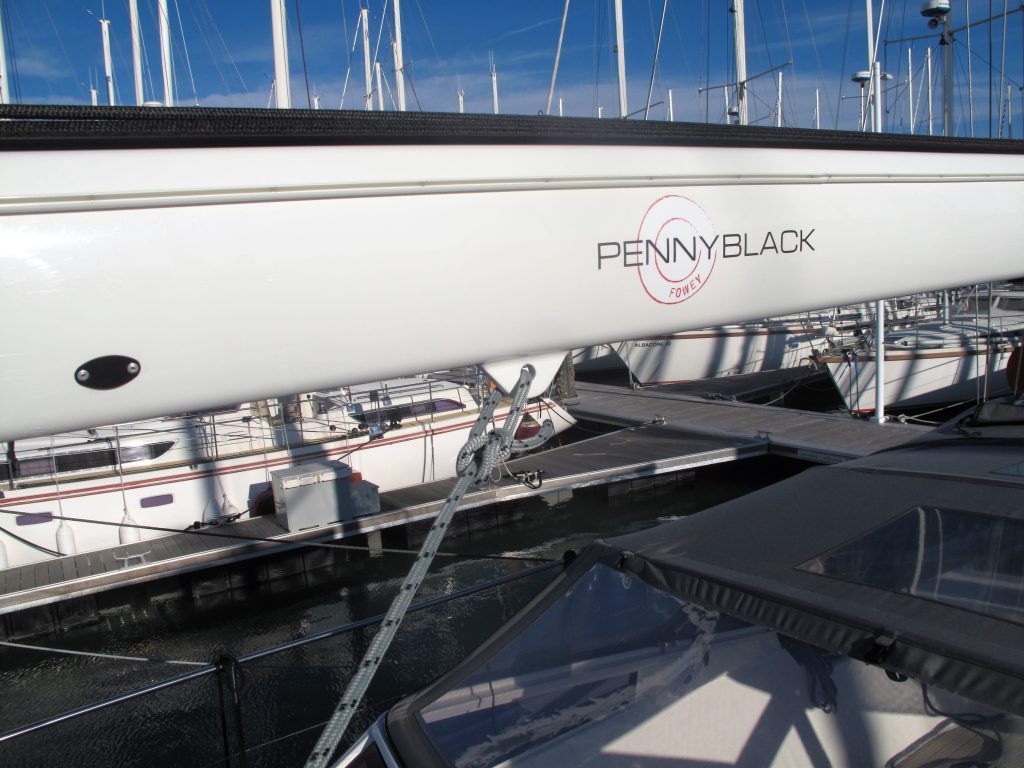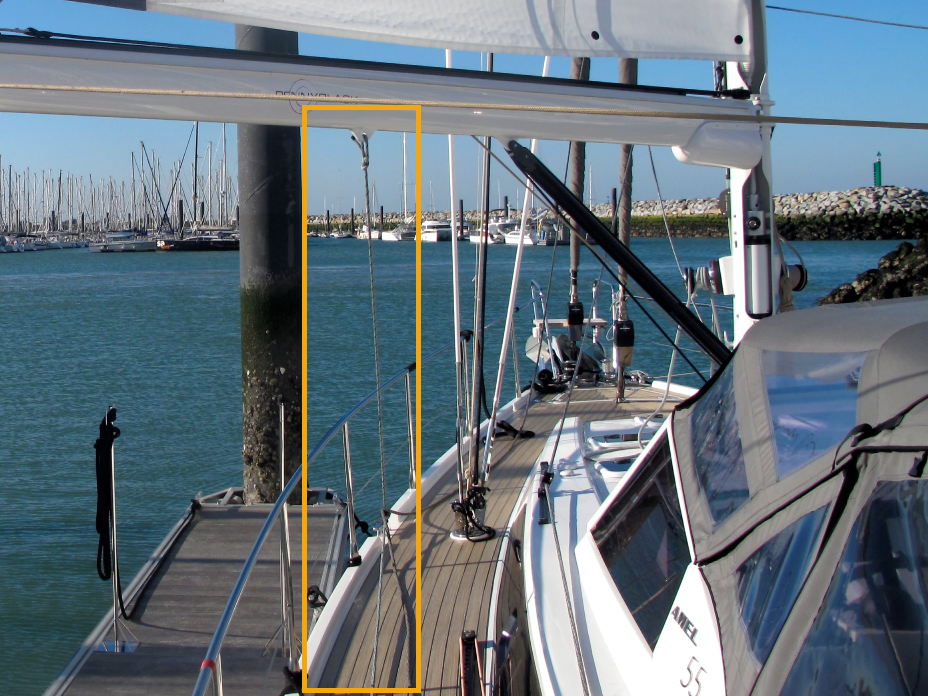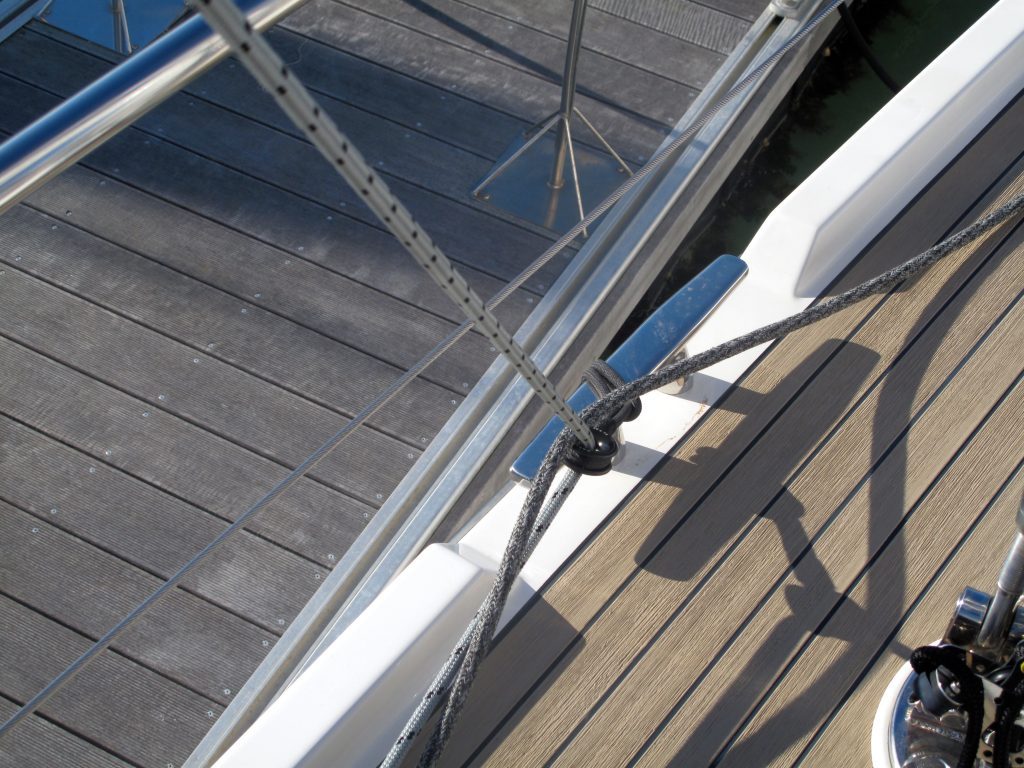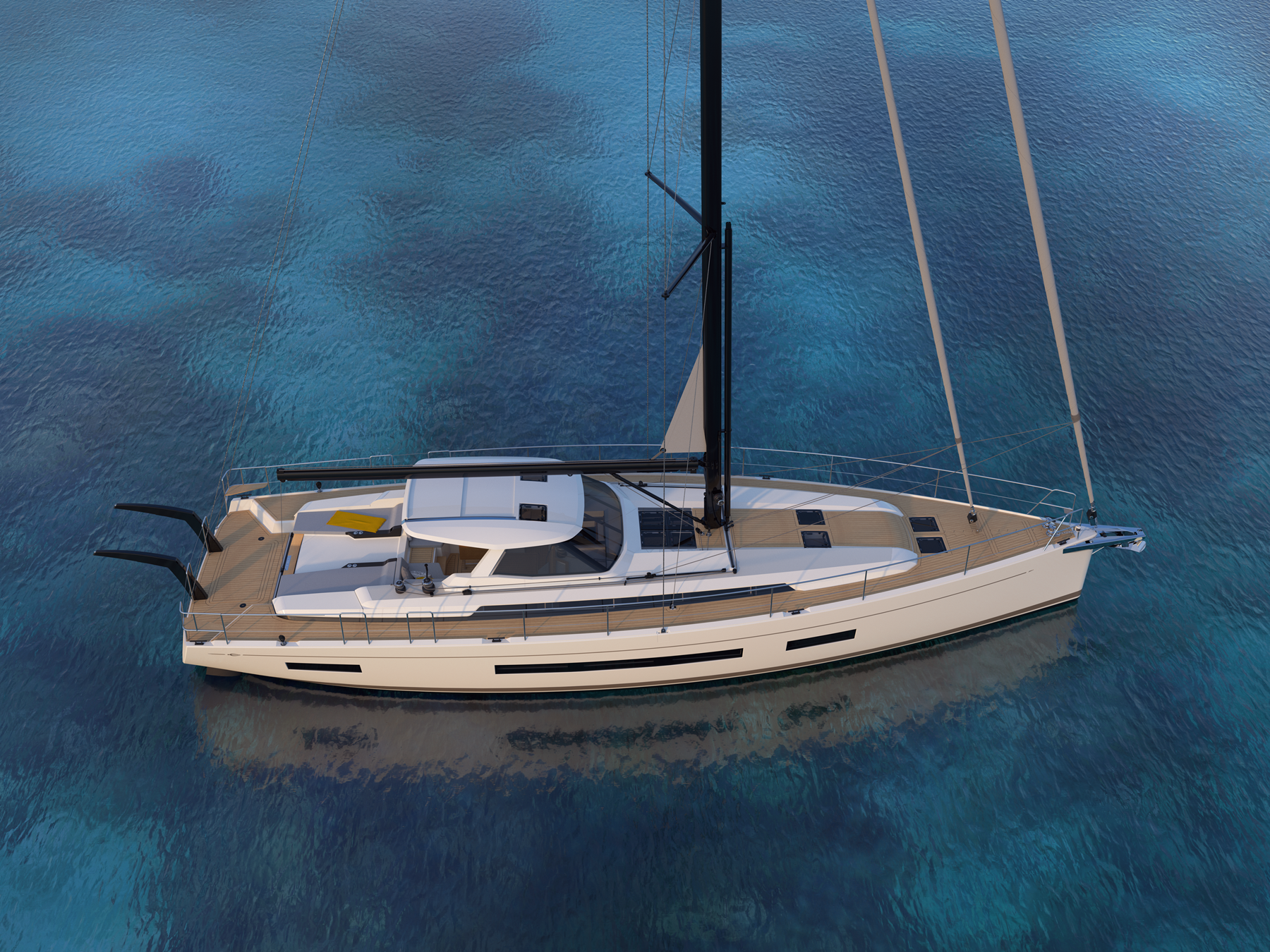Installing boom preventers:
This is a relatively simple and usual sail handling for most of you. This article is a reminder of the method, interesting to read before a season or for a new crewmember that would like to get acquainted with your boat.
In which case?
The boom preventers are to be installed in two cases: either when sailing downwind when the possibility of an uncontrolled jibe must be avoided, or in order to immobilize the booms when the wind is weak and the sails are flapping. It is a safety element in the first case, and comfort in the second. However, in terms of navigation, comfort is synonymous with safety. A boom that beats in the small conditions is a sign of premature wear of the gooseneck and other stressed mechanical parts.
Precaution:
A “wild-Jibe” remains an incident to be avoided due to its brutality, both for the crew and for the equipment, which is subjected to a shock. In the worst cases, the boom preventers are not in place, the booms cross the bridge at full speed with a force that carries everything in its path. This can lead to serious injuries, with or without “unplanned swimming” for the crew, and significant material damage to the boat, which can lead to dismasting (never seen on an Amel).
A complete emergency procedure in case of jibe is proposed here. It may be interesting to be concerned about the consequences of setting up booms in advance.
How?
There are several systems to hold the booms on our different boats.
Holding booms – Tackle:
We first proposed tackles equipped with a cam cleat that is fixed to the boom and then to the shrouds’ foot. It is a simple system to set up. Its only disadvantage lies in the fact that it is necessary to leave the cockpit and to advance to the cleat-jam to unblock the preventer. It may also be difficult to disengage the rope of the cam cleat. You will need to take the rope with both hands and use your foot to release it from the cleat. Be ready to let go if you feel that you will not be able to hold it back once unlocked.
In case your sail has jibed and is therefore held against the wind, it is better to furl it rather than to move to the mast. If the wind is not too strong, you can also opt for starting the engine, which will allow you to make the boat manoeuvrable in order to jib again. In both cases, you avoid getting out of the cockpit, having to free a cam-cleat jammed by the pressure of the sail and then having to hold the boom by hand while she jibs (which is impossible on an Amel 64 for example).
Boom hold – returned to the cockpit:
The last system we use is a bit more complicated to set up but allows freeing the preventer from the cockpit. We use a bowline knot on the boom (photo 1), and then we bring it back to the genoa winch using two friction rings on the lateral mooring cleats (Photo 2 to 4). Note that it is important to keep the genoa sheet on the outside of the boom preventer, otherwise the sheet and the preventer will rub when you free the genoa (Photo 5). Once the preventer is in place, secure the boom by tensioning the mainsail preventer and mainsheet.

Picture 1 : Bowline on the mainsail boom

Picture 2 : Rear friction ring

Picture 3 : the boom preventer goes from the winch to the rear friction ring and then to the front friction ring.

Picture 4 : The boom preventer (grey) arrives from the rear friction ring, passes through the front friction ring and ends up knotted on the boom.

Picture 5 : The boom preventer passes “inside” the genoa sheet.
A possible tip if you are needing to jibe frequently during your navigation, is to set up 2 boom holds. A restraint on each tack will allow you not to have to uninstall your system before restoring it after the jibe. All you have to do is free or tension it from the cockpit. On the other hand, you need a second set of boom preventer on board.





